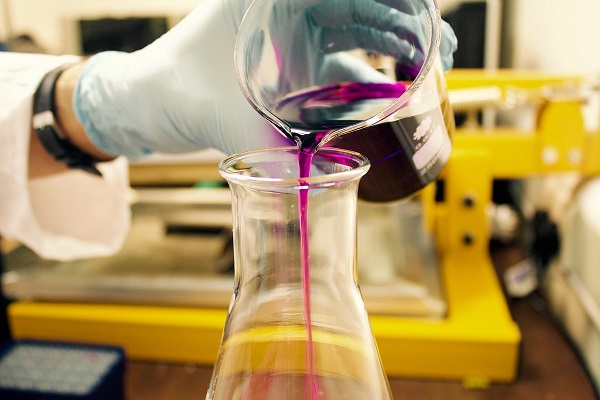
Plants Use Their Roots to Measure Available Manganese Concentrations in Soil
Every organism needs manganese as an essential nutrient. For example, in plants, it plays an important role in the decomposition of water into oxygen and hydrogen during photosynthesis. A team of German and Chinese researchers first demonstrated how plants sense manganese deficiency at the molecular level and what processes subsequently occur in plants using the model species thale cress. Researchers have found that a group of hitherto undiscovered cells in the roots of plants play a decisive role. The scientists hope the results of their work will find ways to make plants more resistant to manganese deficiency, a condition that often occurs in alkaline and calcareous soils, in the future.
Professor Jrg Kudla, from the Institute of Plant Biology and Biotechnology at the University of Münster (Germany), was one of the lead authors of the study, as he said: “There have been many studies focusing on which proteins in the cell are involved in manganese absorption and transport. But how the balance of manganese is regulated at the organismal level is completely unknown. Because calcium is involved as a messenger in many other regulatory processes in plants, researchers asked themselves whether calcium also plays a role in regulating manganese balance.
The team found a special cell population in plant roots and named it a “manganese-sensitive niche”. Unlike all other root cells, these cells show a special response when manganese is deficient: as long as manganese is deficient, intracellular calcium concentrations rise and fall several consecutive times. Each shake lasted approximately 30 minutes. “No one has previously observed this multicellular oscillation in calcium concentration, which is established by the coordinated occurrence of calcium signaling in individual cells in plants,” Kudra said. “Only a few hundred cells together form a signal. Epidermal cells, the outermost root layer, start to increase calcium concentrations first. Then, cells located deeper inside follow up gradually before the entire process is reversed.
In earlier work, researchers led by Jrg Kudla have already identified two other “sensitive niches” in other areas of the root, a potassium-sensitive niche and a sodium-sensitive niche. Here, roots also respond to changes in ion concentration in the environment by generating multicellular calcium signals in specific cell populations. However, the researchers did not observe any oscillations, unlike in manganese-sensitive niches.
In their current study, the researchers found that calcium oscillations triggered by manganese deficiency activated two special enzymes, so-called calcium-dependent protein kinases (CPK21 and CPK23), which, on their own, stimulated manganese absorption. “As kinases are released from calcium, these substances become inactive again. Our hypothesis is that each oscillation restarts this process until plants get enough manganese uptake,” Cudra says. The manganese transporter NRAMP1 is responsible for transporting manganese into cells of roots, and it is part of this process. Protein kinases CPK21 and CPK23 interact with this transporter and regulate manganese uptake by phosphorylating a specific amino acid (Thr498).
To demonstrate the occurrence of calcium signals, researchers used high-resolution microscopy and, for the first time, ultrasensitive molecular calcium biosensors. Biosensors can usually observe changes in the concentration of bioactive substances such as calcium in cells and tissues. The team combined these studies, including “biosensor technology in living organisms, with genetic, cell biological, and biochemical methods to clarify the underlying molecular mechanisms.
Collected by Lifeasible, a biotechnology company that specialized in agricultural science, offering a variety of agro-related services including plant breeding, plant protection, plant genetic transformation, plant tissue culture, and more.


